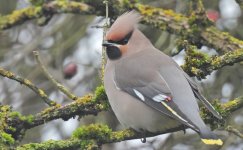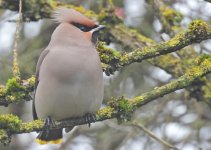MelospizaMelodiaFan
I photograph birds

What did you learn last year that made the biggest difference in your bird photography?
For me, it was to sharpen only the parts of the photo I need by masking off the subject. The idea is to avoid sharpening noise in the background, where it is often the most noticeable. Consequently, you don't need as much noise reduction, and retain details on the bird. This has made a big difference in my higher ISO photos. I learned this from one of Simon d'Etremont's YouTube channel.
For me, it was to sharpen only the parts of the photo I need by masking off the subject. The idea is to avoid sharpening noise in the background, where it is often the most noticeable. Consequently, you don't need as much noise reduction, and retain details on the bird. This has made a big difference in my higher ISO photos. I learned this from one of Simon d'Etremont's YouTube channel.








